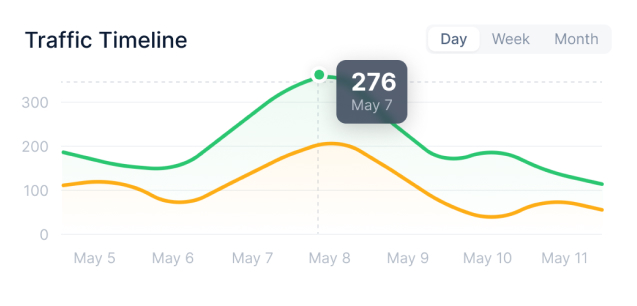How to improve ROAS on Google Ads (Is It Even Possible?)
What do you know about ROAS? Have you looked into it but didn't quite get what the numbers reflect and how could you possibly improve those numbers? We've got you covered!
In this short-and-sweet fourth webinar session, Ralph Perrier, ClickGUARD's Founder and CEO, and Jason Pittock, Strategic Marketer, break down the essential know-how for improving your ROAS on Google Ads.
Jason kick-started the dialogue explaining what ROAS is - the factor of how much you spend on acquiring your customer and how much revenue that equals to. Ralph put it simply: if you spent 100 dollars on customer acquisition and the customer is worth 400 dollars to you, that makes a 400% ROAS.
Thus, ROAS is an essential metric for marketers that shows real raw numbers on each campaign's investment return. Knowing this, keep in mind that, unlike ROI, ROAS doesn't consider the adjacent expenses - say, research and management of each campaign. It strictly looks into what has been spent on the campaign.
You may wonder if there are certain online businesses for which the ROAS is more relevant. Ralph highlights that for e-commerce and phone sales websites, it's the easiest to track ROAS, but yours can highly benefit, nonetheless. To get a quick and accurate snapshot of your campaign's efficiency - what the ads are producing versus what's being spent, apply this formula: conversion value divided by cost.
How about goals? What is a good ROAS? Jason's example of sustainability marketing practice is admirable, but before aiming for that, be mindful of the industry you're in, your budget, and current scaling capability. This said, an online platform focused on disability learning courses can reach a ROAS of 400% (Jason's example), some vendors scale their ads on ROAS of less than 10%, and others need a minimum of 800% to survive.
Thus, there's no wrong or right, not even a minimum ROAS that can guarantee your ads' success rates.
However, wherever you are, you can improve your ROAS, focusing on 8 indicators, following Ralph's advice:
Audience: know your customers well and your ideal customers or users "intimately."
Keywords: never cease to research keywords, especially the less competitive ones.
Conversion journey: understand which part of the conversion journey your keywords align with.
Forensics: keep forensic logs of what you're paying for with every click.
Optimizations: optimize your landing pages for different types of traffic sources, devices, and regions.
Costs: increase your ticket value.
Remarketing: you want to find those people who have shown enough interest in your products or services to visit your website.
Data: monitor and track your data.
By now, you probably know that Ralph is an advocate of knowing what you're paying for and getting the promised value. Knowing that Google's claims about their Ads services are not 100% true and that despite valid requests for refunds, Google doesn't pay back the money spent for invalid traffic, Ralph's advice is to use a tool like ClickGUARD. This will keep you safe from all types of invalid clicks on your Google Ads and eliminate those wasteful clicks on autopilot.
If you've been on the market for a long time, as Jason has, you've probably noticed a shift in marketers' attitude towards Google Ads and the importance of ROAS in their strategies. Ralph advises digital marketers to focus on the results daily and look closely into the raw numbers. To keep everything under control, the management should keep an eye on the bigger picture and factor in all costs associated with each campaign's efforts, be it short or long-term.
Webinar Details
2021-01-12
15:00
30 mins
Share the article
speakers

Ralph Perrier
Founder & CEO of ClickGUARD

Jason Pittock
Former CMO @ ClickGUARD


















